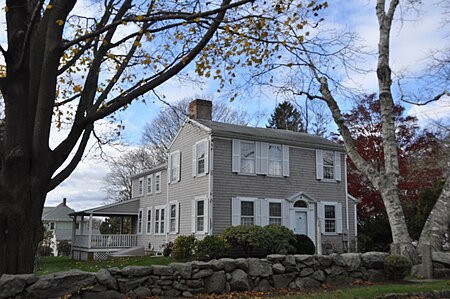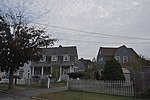Hill School (South Dartmouth, Massachusetts)
Bristol County, Massachusetts Registered Historic Place stubsDartmouth, MassachusettsHistoric district contributing properties in MassachusettsNRHP infobox with nocatNational Register of Historic Places in Bristol County, Massachusetts ... and 2 more
School buildings on the National Register of Historic Places in MassachusettsUse mdy dates from August 2023

The Hill School is a historic school building (now a private residence) at 4 Middle Street in the Padanaram village of Dartmouth, Massachusetts. The two-story wood-frame structure was built c. 1806, and was established by the area's early settlers as a cooperative venture. It has a "3/4" facade, with three asymmetrically placed windows on each floor, and an off-center entry between two of them, with no window above. The building was moved about 450 feet (140 m) in 1912 to its present location.The building was listed on the National Register of Historic Places in 1980.
Excerpt from the Wikipedia article Hill School (South Dartmouth, Massachusetts) (License: CC BY-SA 3.0, Authors, Images).Hill School (South Dartmouth, Massachusetts)
School Street,
Geographical coordinates (GPS) Address Nearby Places Show on map
Geographical coordinates (GPS)
| Latitude | Longitude |
|---|---|
| N 41.586944444444 ° | E -70.940277777778 ° |
Address
School Street 24
02748
Massachusetts, United States
Open on Google Maps








